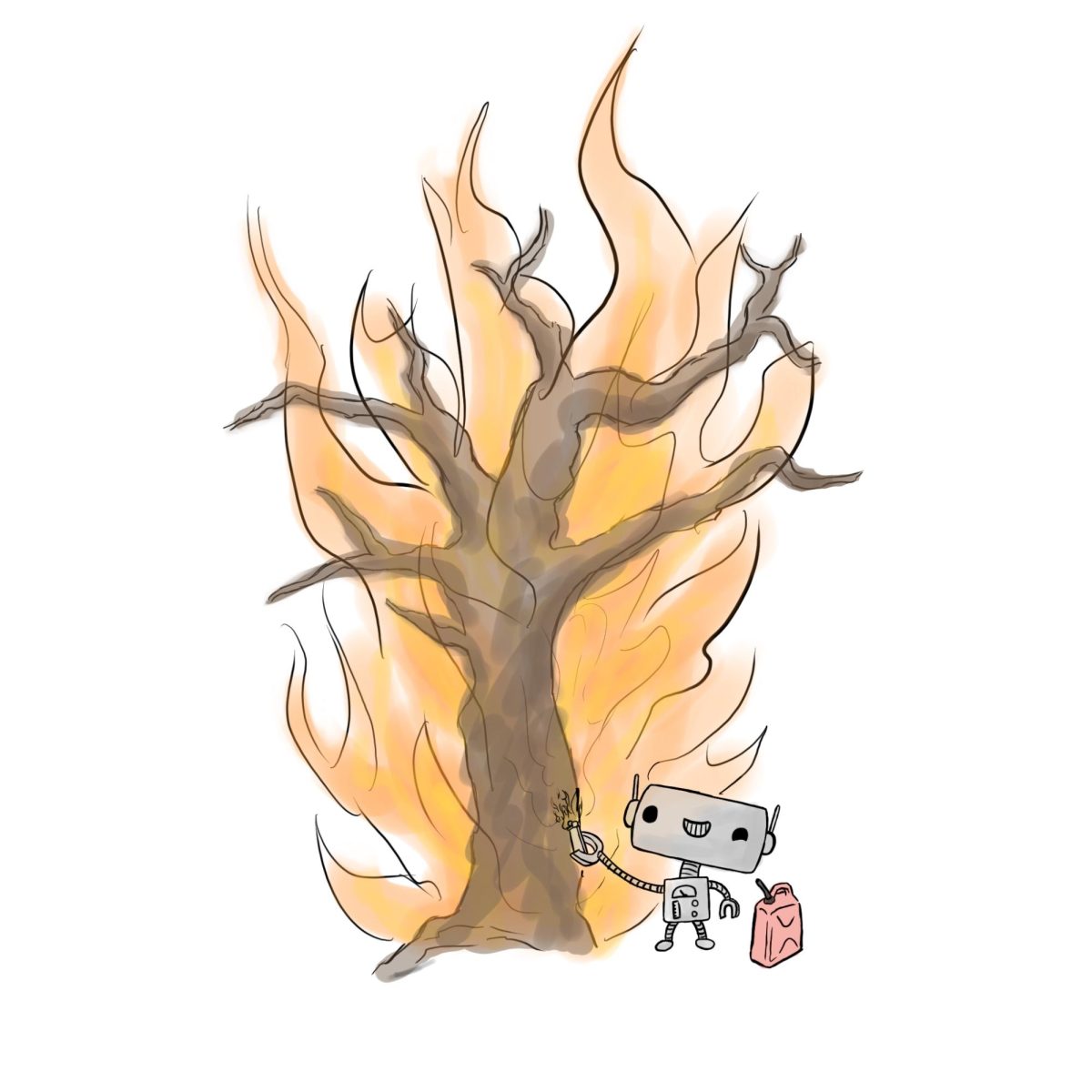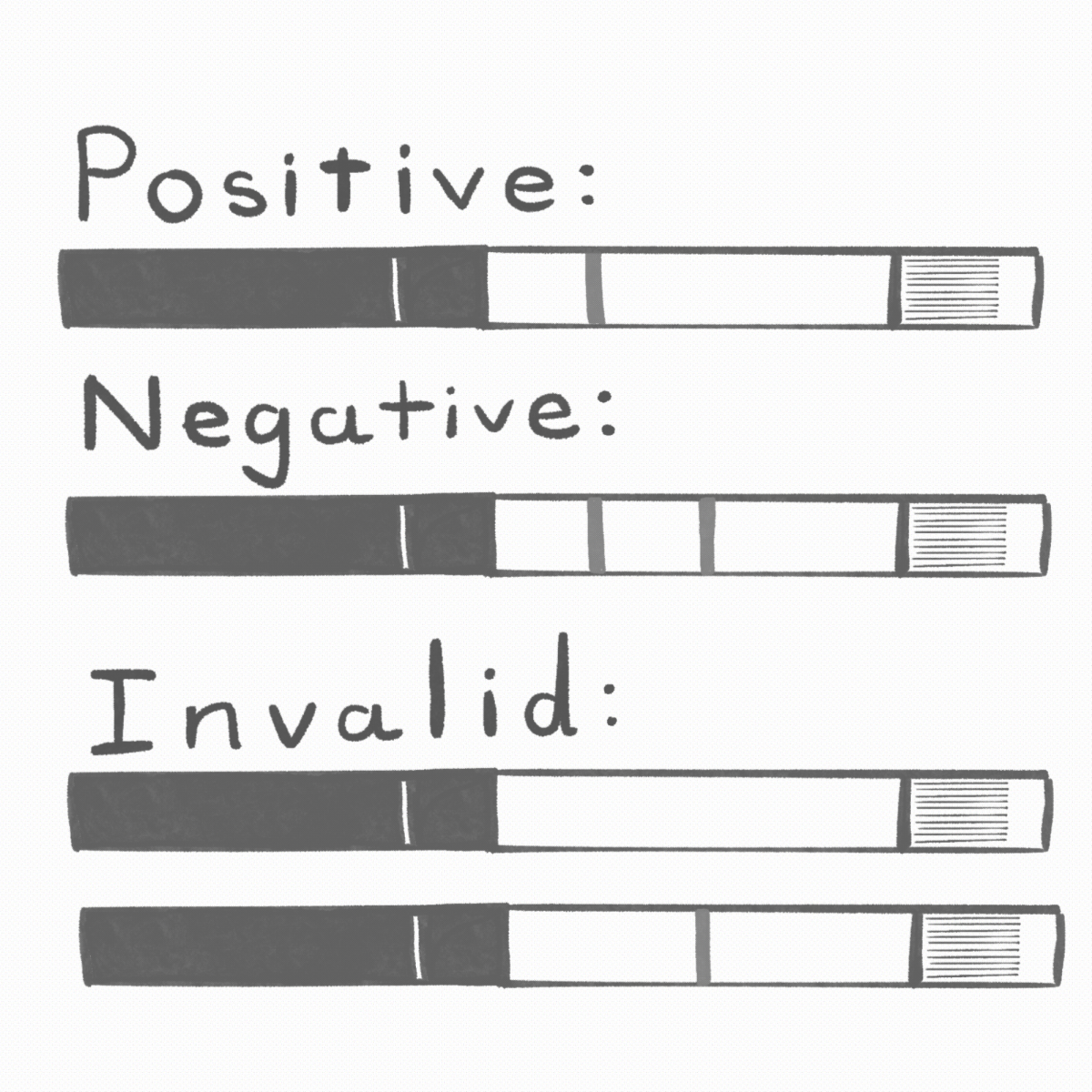Late May was warm and sleepy. The last diplomas were handed out. Students and faculty scattered to all corners of the globe. Summer research projects had not yet kicked into gear. The campus was deserted.
And then the machine arrived.
It sprung up near the rear entrance of Prassel Hall. At first, there was a flurry of activity. Soldiers, military jeeps and photographers. Within a few hours the dust settled, and our unusual visitors had vanished. Sitting in the middle of the parking lot, surrounded by a chain link fence, a mysterious contraption emitted a low, humming sound. A sign on the chain link fence warned “Keep out. Property of the U.S. Army.”
Imagine that a motor home, an industrial air conditioning unit and a water cooler were somehow capable of mating. Their offspring would look exactly like this strange new contraption.
The following day, a new figure arrived on the scene. He wore no uniform, but his bearing suggested military training. Every morning, without fail, he tended to the machine. Adjusting dials. Tightening screws. Examining nozzles. Spraying jets of water into the air. Jotting down measurements in a rugged laptop. He worked diligently, sometimes for hours, day after day.
But why? Who were they?
When I could no longer stand the suspense, I introduced myself to our new neighbor. His name was Moses, he said. Moses West. No stranger to San Antonio, he took courses at Incarnate Word and Trinity University in the 1980s. An inventor and a former military test pilot, he is also a certified member of the U. S. Army Rangers.
I asked him about the machine.
Moses grinned broadly, pausing for dramatic effect. “Saving lives, Aaron. Saving the world. This is the machine that’s going to do it.”
It sounded like a line from an action movie. I was reminded of Arnold Schwarzenegger’s classic line in “Terminator 2: Judgment Day”. “Come with me if you want to live.”
Moses was just getting started. He talked to me about water, reminding me of things I know to be true, but try very hard to forget. Our planet is running out of water. Fast. Water scarcity affects one in three people on every continent, and it’s going to get worse before it gets better.
According to a recent report from the United Nations Children’s Fund (UNICEF), approximately 1,800 children under the age of five die from “diarrheal diseases” every single day because they lack access to clean water. Sà£o Paulo is on the brink of “hydric collapse.” Wildfires continue to rage in drought-stricken California. As a result of pressures placed on groundwater, parts of the San Joaquin Valley floor have sunk more than a foot in less than a year.
Moses West tells me he has a solution. Or at least part of the solution. You see, Moses is a water farmer. That’s right. He farms moisture. Just like Luke’s Uncle Owen in “Star Wars: Episode IV. A New Hope.”
“This machine is going to change everything,” he explained. “This machine taps into the third source of water: Earth’s atmosphere. I’m making water from the air, and it costs next to nothing.”
This seemed too good to be true. Yet, many experts think Moses is on to something. The Texas National Guard, the UTSA Texas Sustainable Energy Research Institute, and Trinity University actively supported the pilot project and the preliminary results seem promising. Moses’ atmospheric water generator has captured the attention of national governments, multinational conglomerates and relief agencies around the globe.
Throughout the summer, Dr. Diana Glawe, in the Department of Engineering, conducted a third party verification of the machine’s performance. She notes that the idea of atmospheric water generation has been around for many years. The exciting thing about this machine is the fact that it is capable of producing drinking water with relatively low energy costs compared to other sources of fresh water such as desalination. The machine is also portable, which means that it can be deployed in emergency situations without an extensive investment in infrastructure costs.
In a recent interview with Next City, Moses says that””with the right kind of support””he can “scale this up to produce a million gallons a day, 30 million gallons a month.”
This is more than a proverbial drop in the bucket. This machine won’t solve all of our water problems, but it can certainly help alleviate some of them.
The summer is over, and so is the pilot program. Moses and his machine have relocated to Austin for the next phase of the project. The parking lot is empty, and the chain link fence is gone. Things just aren’t the same without him.
During one of our final conversations, Moses reiterated his concern that time is running out. Our planet is on the brink of ecological collapse. Climate instability. Rising sea levels. Ocean acidification. The water shortage is just one of many crises that we face.
“We need a national mobilization,” he said. “Like 1941 after Pearl Harbor.”
“If we don’t do something soon,” says Moses, “it will be too late.”





